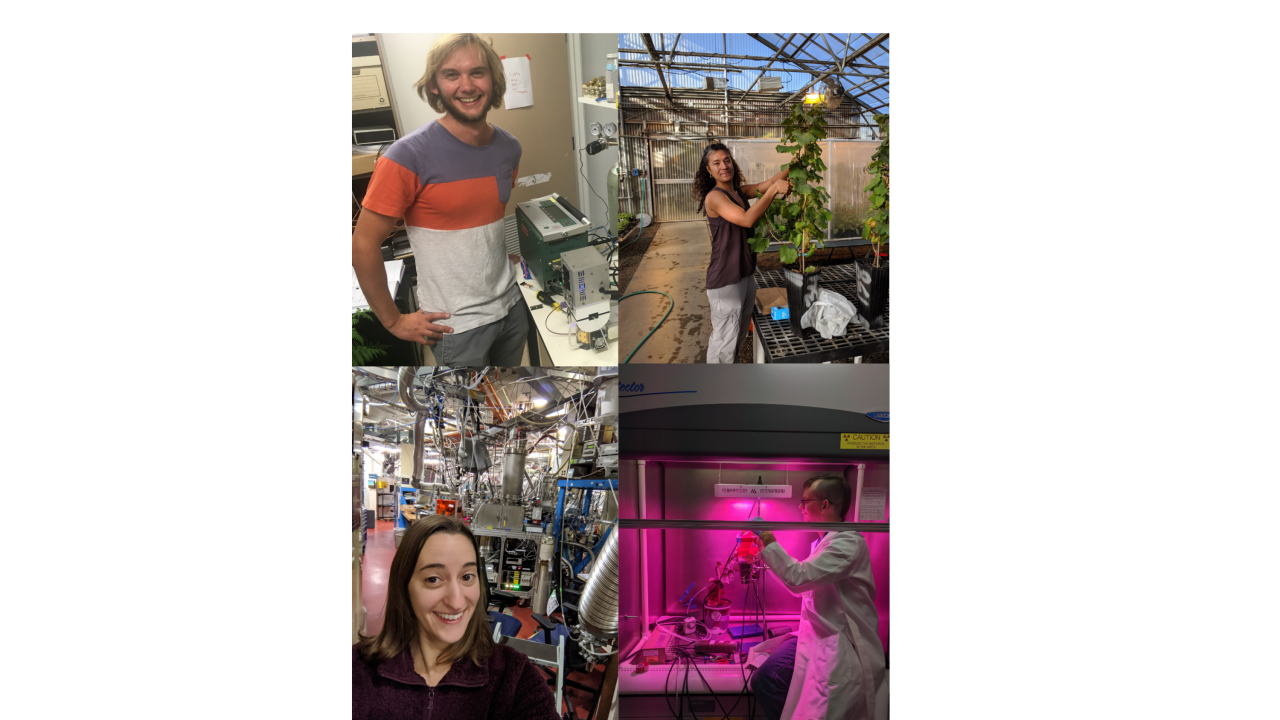
Megan Bartlett is in her third year as a Professor and Plant Physiologist in the Department of Viticulture and Enology. Her research is focused on identifying plant traits to improve heat and drought tolerance and water-use efficiency in grape scions and rootstocks.
One problem grape-growers are facing under climate change, is a mismatch in ripening, where sugars, acids, and tannins no longer reach their ideal concentrations at the same time. Heat and drought speed up sugar accumulation, so growers are forced to harvest early, before tannins are ripe, or risk the bland, overly alcoholic wines produced by excessive sugar. Bartlett Lab postdoc Ryan Stanfield, the 2019 Rossi Postdoctoral Fellow, is studying how grapevines regulate their sugar transport under stress, to find traits a grape breeder could use to bring ripening back into balance. Ryan uses detailed biophysical models of the sugar transport tissue – the phloem – to test how changing the anatomy or molecular biology would affect sugar concentrations in water-stressed vines. His work has shown that both the phloem structure and the proteins that load sugar into the phloem are important controls on sugar concentrations. Ryan is currently testing these findings by infusing droughted vines with radioactive sugars to measure transport and working with the Cantu Lab to relate cultivar differences in sugar transport to diversity in the loading proteins. Eventually, these proteins could potentially be targeted through breeding or even genetic engineering to manipulate sugar accumulation in the berries.
The Bartlett Lab is also investigating whether leaf biochemistry traits are a promising target to improve grapevine drought tolerance. Grape leaves have a high concentration of dissolved solutes, including nutrients, sugars, and proteins. The bonds between solute and water molecules help grapevines hold on to water, and research in the Bartlett Lab has shown that grape cultivars with higher solute concentrations can keep their stomata open and maintain photosynthesis under drier conditions. Relationships between photosynthesis and water stress are too labor-intensive to measure as part of breeding, but leaf solute concentrations can be screened at high throughput, suggesting breeders could target this trait to improve photosynthesis under drought. Ross Deans, another Bartlett Lab postdoc, is modeling the relationship between solute concentrations and photosynthesis to identify the concentration values that would maximize the carbon gain by water-stressed grapevines. Breeders could then target these concentration values in new cultivars. Finally, lab technician Gabriela Sinclair is leading a project evaluating whether the chemical composition of the solutes is important. Using ‘cheap’ solutes, that require little energy or carbon to produce, could help grapevines build up higher concentrations and achieve greater drought tolerance. Gabriela will join the lab as a PhD student in the fall, and her research will focus on the interactions between trunk disease and drought resistance.
